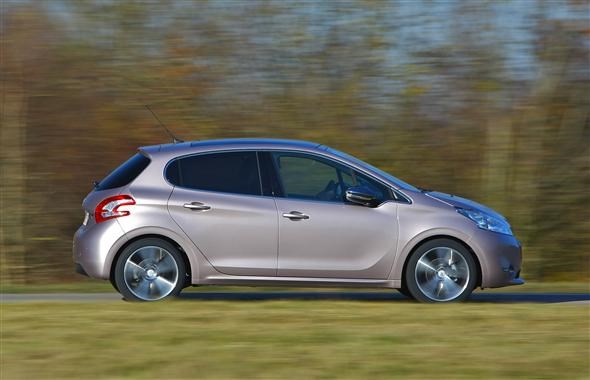The Peugeot 208 1.6-litre e-HDi Feline 5dr is aimed at wooing company car drivers with its high level of kit and low tax costs.
There’s a wider question to be answered though: can the 208 make the grade and banish the ghost of the Peugeot 205? Ever since production of the 205 stopped in 1997, Peugeot has failed to deliver a worthy replacement.
This could be about to change, however. The new Peugeot 208 looks set to be serious competition to the likes of the Ford Fiesta and Vauxhall Corsa. With its stylish looks, smart interior and line-up of fuel-efficient engines, the 208 should be a big hit.
More important to company car drivers, however, is how much the Peugeot 208 is going to cost them. This model emits of 99g/km of CO2, which slots it into the 13% Benefit-in-Kind band for 2012/13. With a P11d value of £17,790 a 20% tax payer will pay £38.55 a month. A 40% tax payer will pay out £77.09 a month.
The Feline is the top trim level too, so you won’t need to add many options, helping keep the P11d value down. It comes with a long list of standard equipment, including air-con, electric mirrors, front fog lights, heated mirrors, sports seats and cruise control. Parking sensors and rear electric windows are optional, and could come in useful.
The French maker claims that this Peugeot 208 1.6-litre e-HDi with 115bhp will achieve 74.3mpg on a combined run. In real-world driving we’d expect to see around 64mpg, which is should still make for pleasant reading in the current climate of high fuel prices.
Peugeot’s 1.6-litre e-HDi diesel engine produces a useful 115bhp. Performance figures are not spectacular but are relative for this size of car. It will get from zero to 62mph in 10.8s and it has a top speed of 118mph. It feels like it has plenty of power when nipping in and out of urban traffic, which is where cars like this typically excel.
At the same time, 270Nm of pulling power is adequate enough when you need to pass slower traffic on single lane carriageways. You will have to drop a gear or two but working the gearbox is quite enjoyable thanks to the smooth shifting six-speed transmission.
It is quite capable through bends and, although it may not be as good as the class-leading Ford Fiesta, it definitely is the best small car that Peugeot has built since stopping production of the legendary 205.
Big improvements can also be seen inside. The 208 features the what is easily the best interior that Peugeot has fitted to any of its small cars in the past 15 years.
No longer is there a multitude of confusing buttons on the central console. It has all been simplified and the entertainment systems can now be operated via a touchscreen, on Active trim and above, making life a lot easier. The plastics are soft to touch and good quality, making the 208 much classier than its predecessor, the 207.
The dinky steering wheel is also very good. Some enthusiastic drivers, however, will be unable to get their perfect driving position. The driver’s seat does not adjust quite low enough while dropping the seat as low as possible, means you can’t quite see the entirety of the speedo. This makes things a little awkward when trying to get in the ideal position.
Peugeot seems to have finally got it right and the 208 should help win back customers. The low cost, highly specified Feline version could make a serious dent in the supermini end of the company car market.
The Peugeot 208 1.6-litre e-HDi Feline five-door is available to order now.
Also consider
A small car with big ideas. As well as being stylish and good to drive, it borrows many innovations from larger Fords such as keyless entry and Bluetooth.
Depending on which engine you choose the VW Polo can be incredibly frugal or delightfully quick. Much of the look and layout inside echoes that of the bigger Golf.
It achieved the maximum five-star Euro NCAP crash rating meaning it’s incredibly safe. Cabin quality is much improved over the previous Clio and the design and finish has an upmarket feel.
Just so you know, we may receive a commission or other compensation from the links on this website - read why you should trust us.




